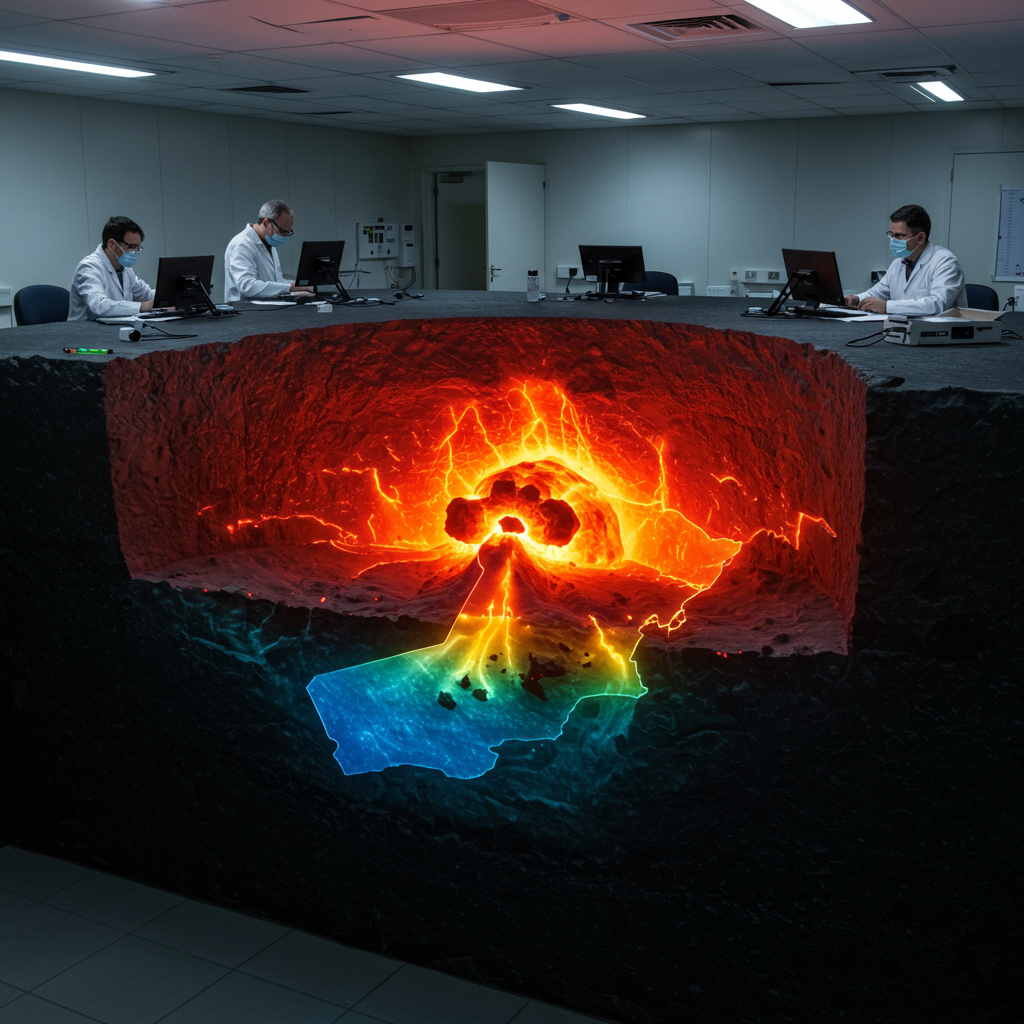Uncovering a Deep Earth Mystery Beneath Oman
Scientists peering deep into Earth’s interior may have stumbled upon a previously unknown geological phenomenon: hidden pathways venting significant heat from our planet’s core. A recent discovery beneath Oman suggests the existence of “ghost plumes” – columns of unusually hot rock rising from the lower mantle, but without the typical volcanic activity seen at the surface.
This intriguing finding challenges traditional understanding and implies that more heat might be flowing out of Earth’s core than current models account for, potentially impacting everything from plate tectonics to the magnetic field.
What Are Mantle Plumes?
Conventionally, mantle plumes are understood as narrow upwellings of superheated, buoyant rock originating near the core-mantle boundary, located roughly 2,900 kilometers (1,800 miles) beneath our feet. These fiery columns are thought to be a key mechanism for transporting intense heat from the core towards the surface.
Well-known examples of hypothesized mantle plumes include those believed to feed volcanic hotspots like Yellowstone in the United States or the active rift zone in East Africa. A defining characteristic of these classic plumes is their clear association with volcanism on the planet’s surface – evidence of the deep heat breaking through the crust.
The Anomaly in Oman: A “Ghost Plume”?
However, the suspected plume identified deep beneath the Al Hajar Mountains in Oman presents a puzzling exception. While seismic data indicates a region of unusually warm rock rising from the deep mantle, there’s a striking absence of any recent volcanic activity in the area. This lack of a surface volcanic signature is precisely why researchers are calling it a potential “ghost plume.”
The possibility of this hidden plume was first suggested serendipitously by Simone Pilia at the King Fahd University of Petroleum and Minerals in Saudi Arabia. Analyzing new seismic data from eastern Oman, Pilia observed that seismic waves generated by distant earthquakes slowed down significantly when passing through a specific, cylindrical region beneath the mountains. This slowdown is a tell-tale sign that the rocks in this column are hotter and less rigid than their surroundings deep within the Earth.
Further independent seismic measurements supported the hypothesis, detecting crucial deep-Earth boundaries where minerals change phase under intense heat and pressure. The depths and characteristics of these phase changes within the observed region align with the presence of a hot rock column extending downwards for more than 660 kilometers (410 miles) below the surface.
More Than Just Seismic Evidence
The evidence for this deep-seated heat source doesn’t stop at seismic observations. Researchers suggest that a plume in this location could also help explain other geological puzzles in the region. For instance, it offers a plausible reason why the area has continued to gain elevation even after tectonic forces causing compression ceased. The potential plume’s timing and location also appear to align with models explaining a past shift in the movement direction of the Indian tectonic plate.
Based on these converging lines of evidence, Pilia and his colleagues became convinced of the plume’s existence, tentatively naming it the “Dani plume” after Pilia’s son. While acknowledging the inherent difficulty in detecting narrow plumes so deep underground, experts like Saskia Goes at Imperial College London have reviewed the findings and found the existence of a plume in the region to be “plausible,” noting the study’s thoroughness.
Implications: More Hidden Heat Than Imagined?
The discovery of a potential ghost plume, unannounced by surface volcanism, carries significant implications for our understanding of Earth’s inner workings.
If the Dani plume is real and its heat isn’t reaching the surface as eruptions – perhaps due to a particularly thick or resistant overlying layer of rock beneath Oman – it raises the possibility that similar hidden plumes exist elsewhere around the globe.
Should hidden plumes prove to be more common than previously thought, it would mean that a greater proportion of Earth’s internal heat is being channeled towards the surface via these direct, though unseen, pathways. This challenges traditional models that primarily accounted for heat loss through slower, broad-scale convection and visible volcanism.
A potential increase or redistribution of estimated heat flow from the core could necessitate a revision of current models of planetary evolution and internal thermal structure. It would also add a new layer of complexity to understanding deep Earth dynamics, including how heat transfer influences phenomena like plate tectonics and the generation and maintenance of Earth’s vital magnetic field.
The researchers are reportedly “convinced that the Dani plume is not alone,” suggesting this discovery might be just the tip of the iceberg in revealing a hidden network of heat transport channels deep within our planet. This finding opens exciting new avenues for investigating subterranean heat flow and potentially undiscovered geological features impacting Earth’s ongoing activity.




